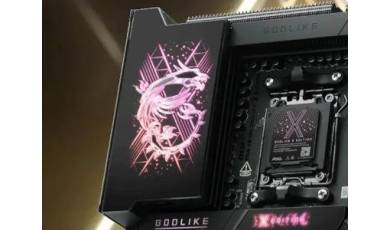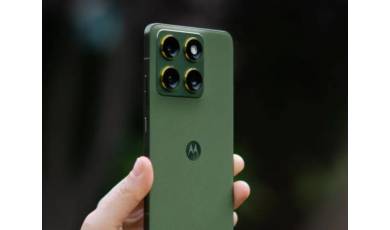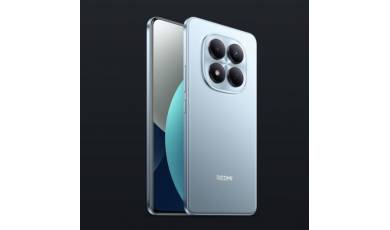Ramos MOS1 specs.
Mobiles >> Ramos >> Ramos MOS1| Specifications | Reviews | Secret codes |
| Unlock phone | Root phone |
| Backup | Flash Firmware | Screenshot |

Body Ramos MOS1
Size:
77.3 mm x 154.3 mm x 7.6 mm
Weight:
158 g
Frame size:
0.31 mm
Usable surface:
69 %
Materials:
Aluminium alloy
Colors:
Champagne Gray White
Screen Size: This diagonal display size is usually measured in inches.
This diagonal display size is usually measured in inches.
5.5"
Screen Type:
LCD IPS
Screen Resolution: Screen resolution refers to the size of the image received on the screen in pixels
Screen resolution refers to the size of the image received on the screen in pixels
1080 x 1920 px
Density:
Very high density, 401 Pixels per inch differentiable less than 5 cm away
Others:
2.5D curved glass screen, Capacitive, Corning Gorilla Glass 3, GFF full lamination, Multi-touch, Scratch resistant
Software Ramos MOS1
Smart Phone OS: An operating system (OS) is software that interacts between a user and a smartphone.
An operating system (OS) is software that interacts between a user and a smartphone.
Android 5.0 Lollipop
Performance Ramos MOS1
Model:
Qualcomm Snapdragon 615 MSM8939
CPU: Central processing unit
Central processing unit
Cortex A53
Type:
Octa-Core
Frequency:
1.7 GHz
GPU: Graphics Processing Unit
Graphics Processing Unit
Qualcomm Adreno 405
RAM: Random Access Memory
Random Access Memory
2 GB
Antutu score:
31.200 Overall performance better than 63% of smartphones
Capacity:
32 GB (Capacity with the OS (depends on the brand and ROM version): 25-31 GB)
More or less equivalent to:
5818 Songs, 12800 Photos and 457 Videos
SD Slot:
No,
Special Features Ramos MOS1
Fingerprint:
No
Accelerometer:
Yes
Compass:
Yes
Gyroscope:
Yes
Light sensor:
Yes
Proximity:
Yes
Camera Ramos MOS1
Screen Resolution: Screen resolution refers to the size of the image received on the screen in pixels
Screen resolution refers to the size of the image received on the screen in pixels
13 Mpx
Sensor:
Type:
CMOS
Aperture:
f/ 2.0
Flash:
LED
Features:
Autofocus, Continuous shooting, Digital image stabilization, Digital zoom, Exposure compensation, Face detection, Geotagging, HDR, ISO settings, Panorama, Scene mode, Self-timer, Touch focus, White balance settings
Slow Motion Video:
No, 30.0 fps
Screen Resolution: Screen resolution refers to the size of the image received on the screen in pixels
Screen resolution refers to the size of the image received on the screen in pixels
5 Mpx
Connectivity Ramos MOS1
4G LTE:
1800, 1900, 2300, 2500, 2600 MHz
3G: Third generation cellular network
Third generation cellular network
1900, 2100, 850, 900 MHz
2G: Second generation cellular network
Second generation cellular network
1800, 1900, 850, 900 MHz
SIM:
Single SIM (Micro SIM)
Wi-Fi standards:
802.11b, 802.11g, 802.11n
Others:
Wi-Fi Hotspot
Bluetooth: Bluetooth is used to exchange data between nearby mobile devices.
Bluetooth is used to exchange data between nearby mobile devices.
v4.0
Profiles:
A2DP (Advanced Audio Distribution Profile), EDR (Enhanced Data Rate)
GPS: Global Positioning System
Global Positioning System
with A-GPS Assisted Global Positioning System, GPS
Assisted Global Positioning System, GPS
USB charging:
Yes
USB Mass Storage:
Yes
USB On-The-Go (OTG):
Yes
Audio Jack:
Yes
Computer sync:
Yes
OTA sync:
Yes
Radio FM:
Yes
Tethering.:
Yes
Battery Ramos MOS1
Capacity:
3050 mAh
Type:
Li-Polymer
Others:
Fast Charging, Non-removable
Comments, Questions and Answers about Ramos MOS1
| Sepide | November 14, 2019 | |
| My ramos MOS1 standing on logo and doesnot open it . | ||
Ask a question about Ramos MOS1






